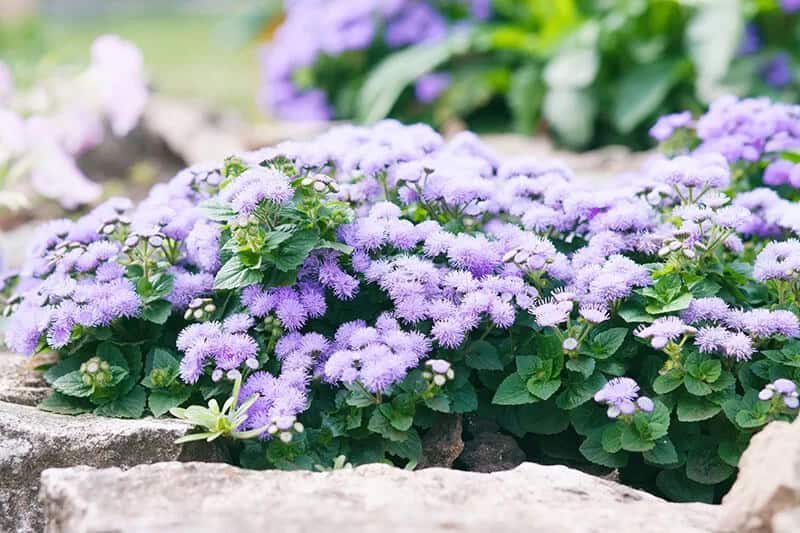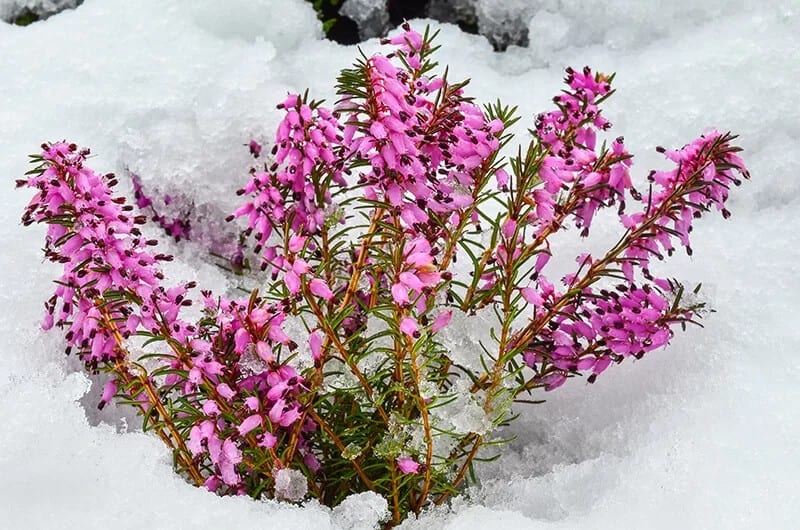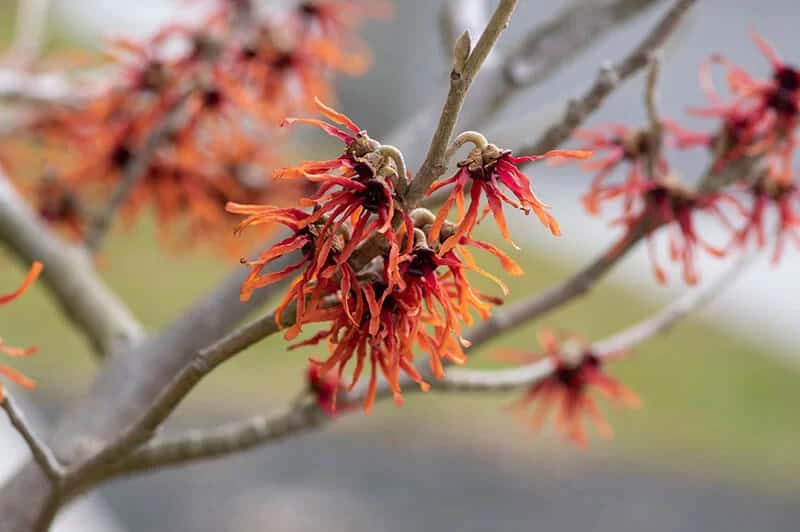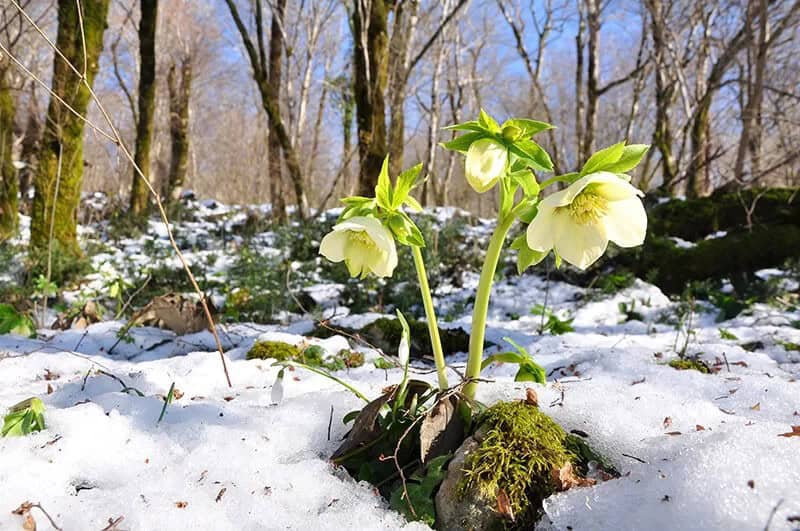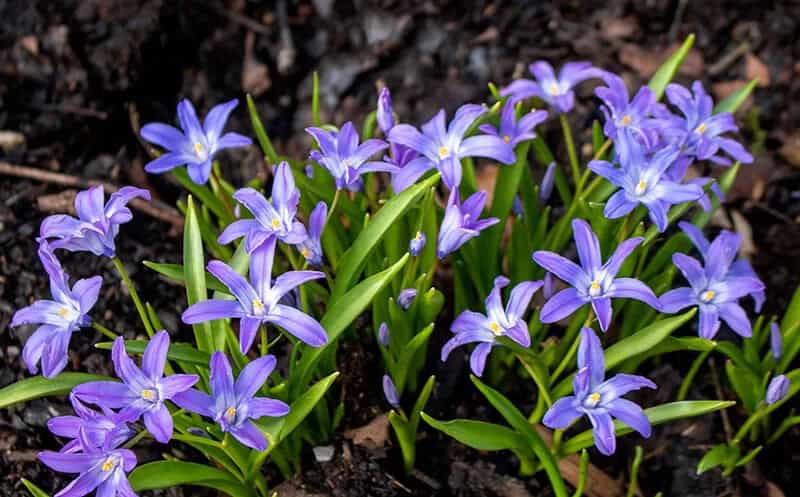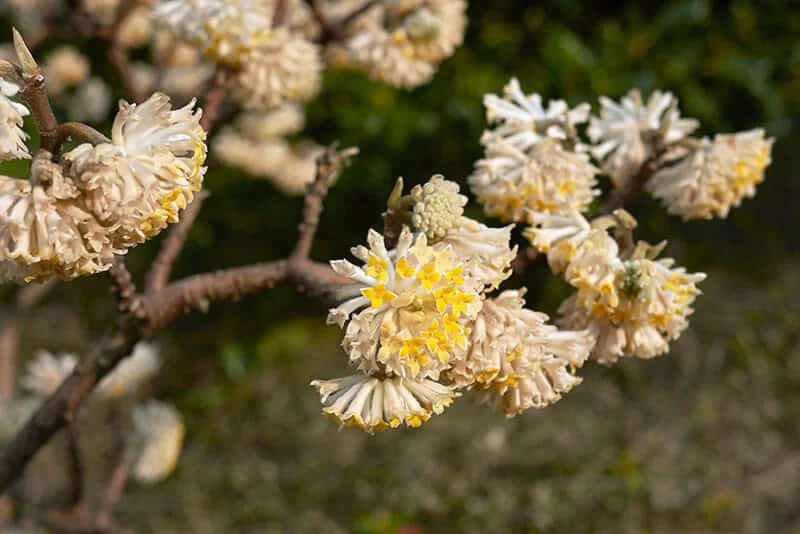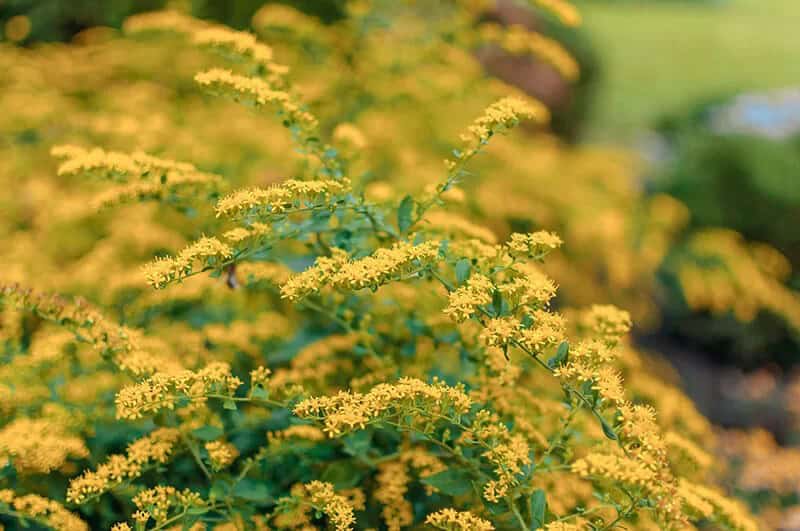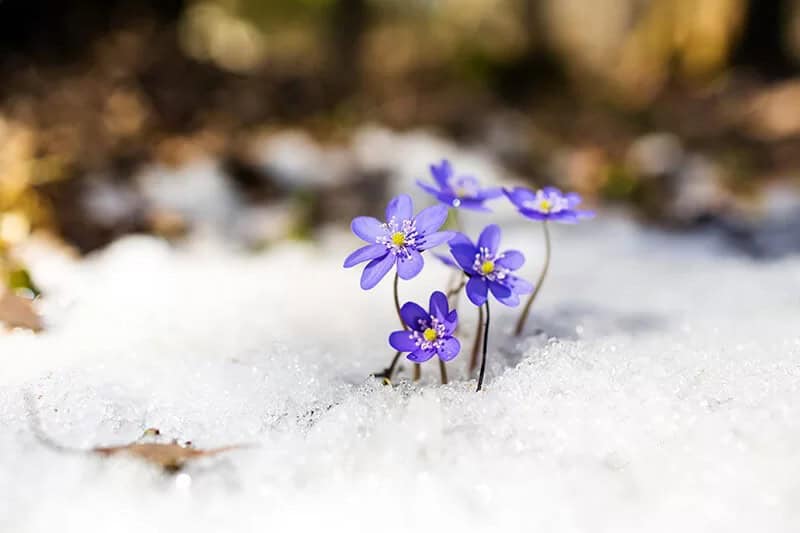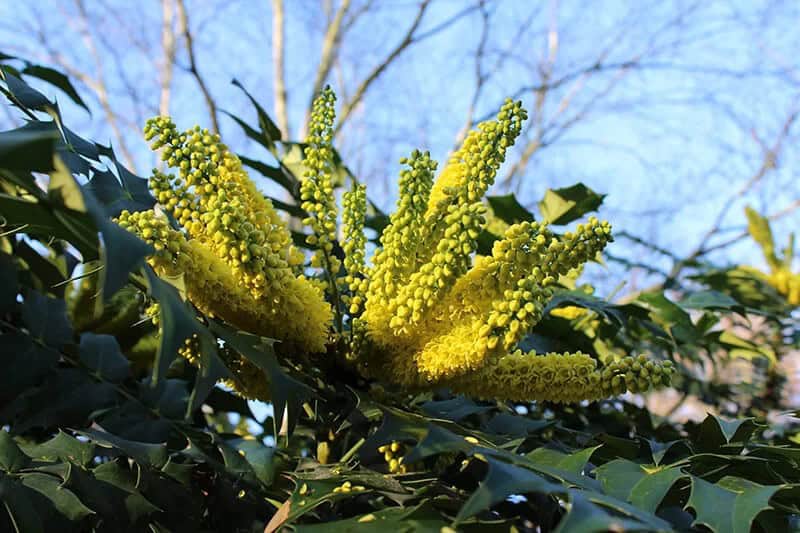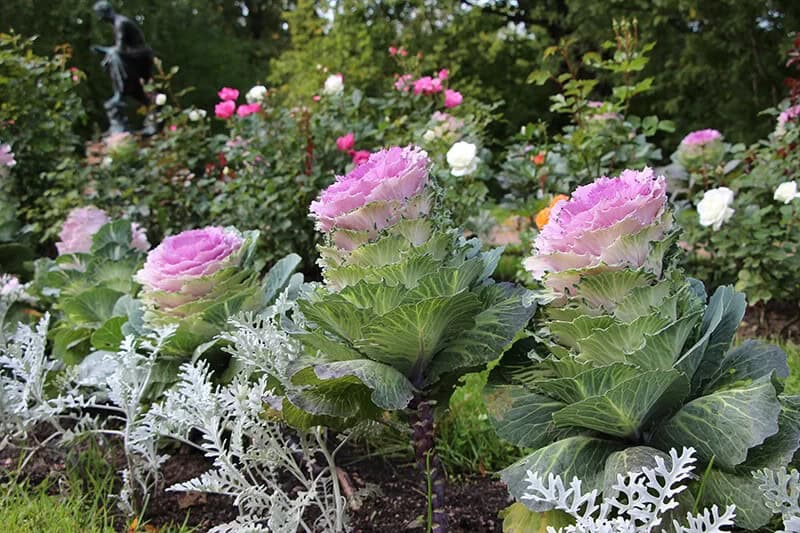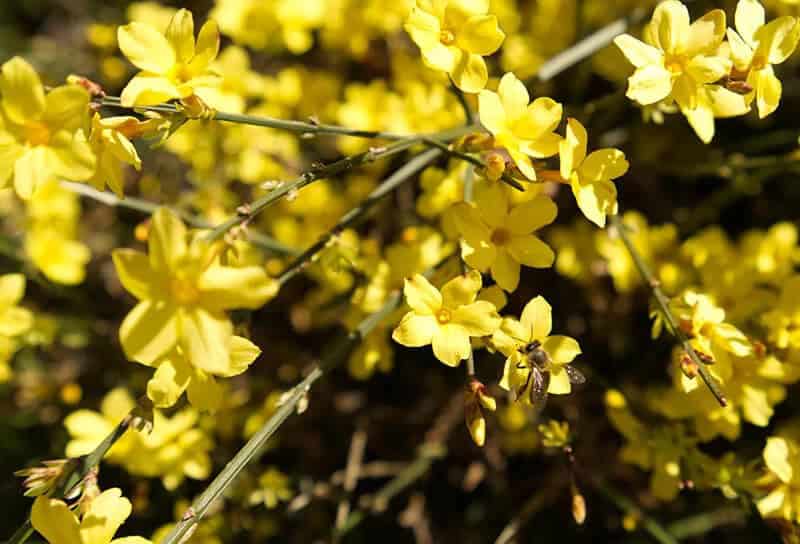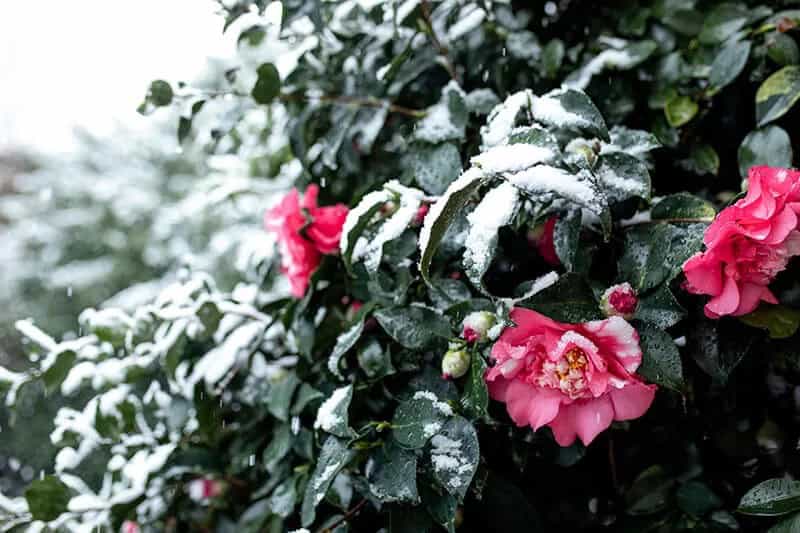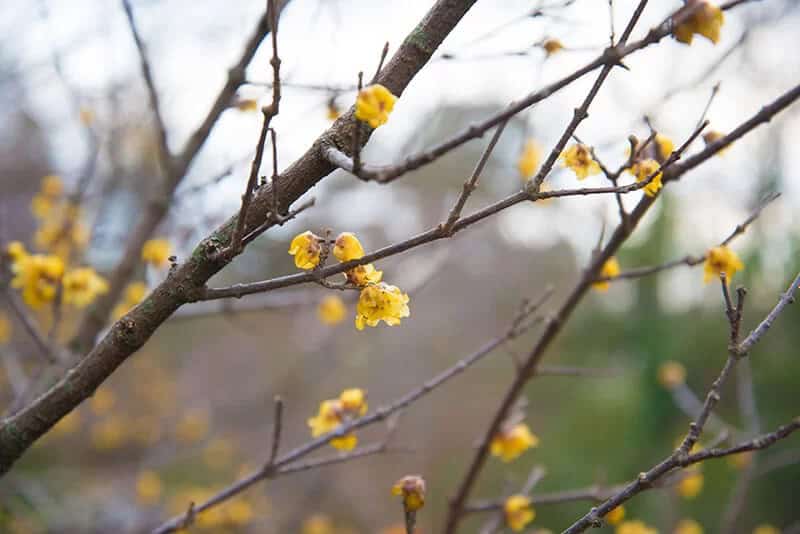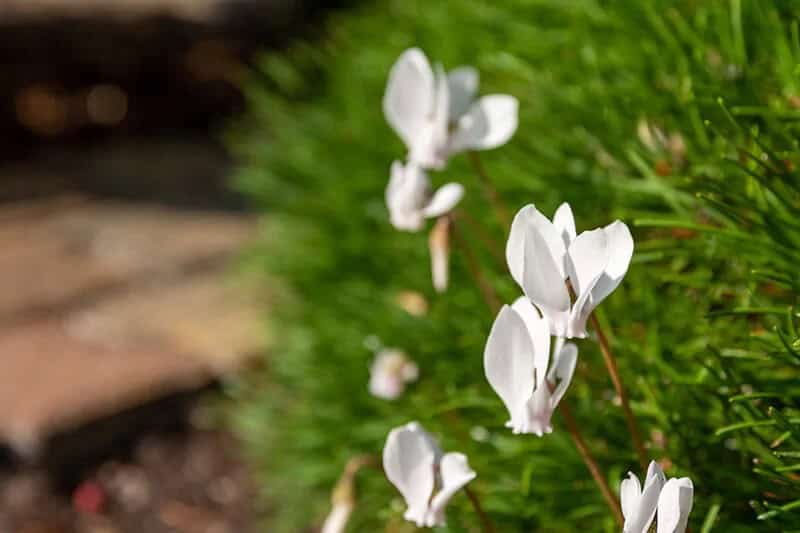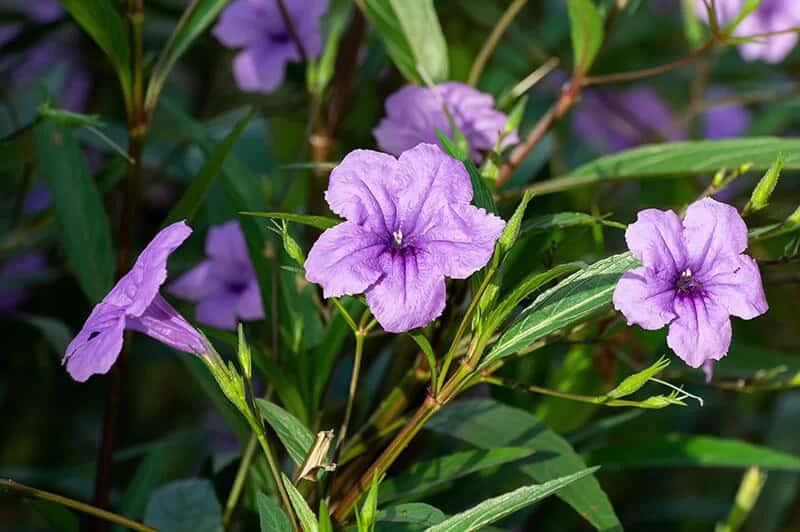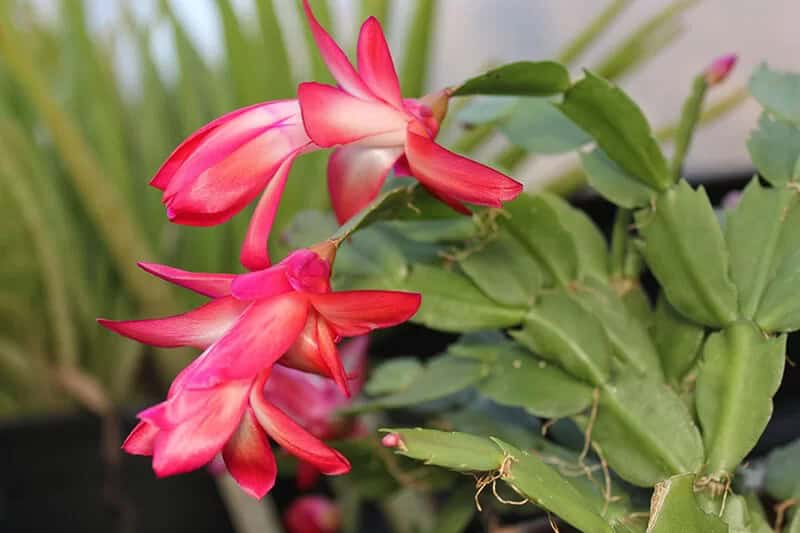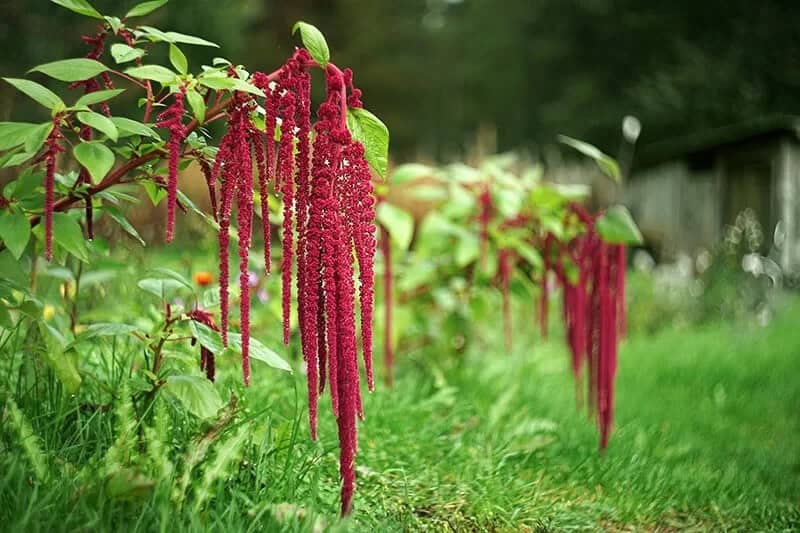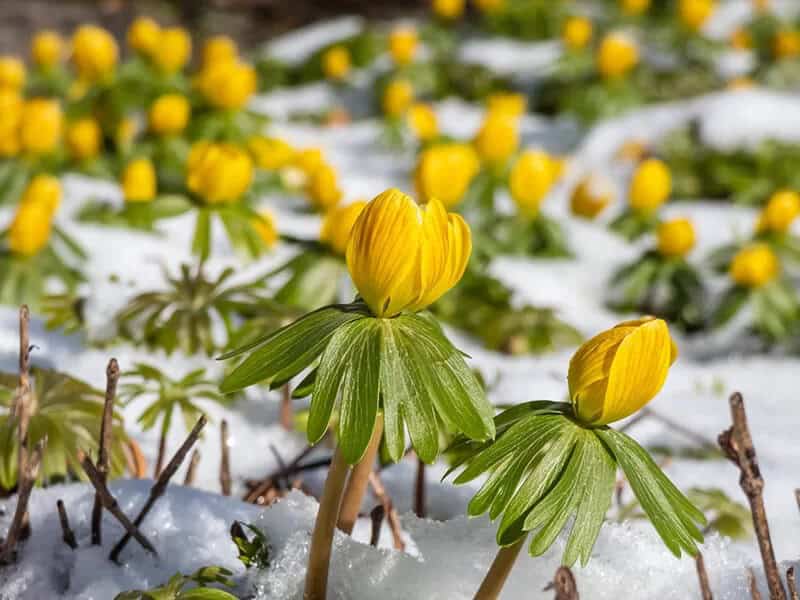As the dreary winter months unfold, it’s a welcome respite to find bursts of color and vibrancy in an otherwise monotonous landscape. Winter flowers, with their unique charm and beauty, have the power to transform a garden from dull to dazzling. With the right selection of winter blooms, there’s always something new to discover, like a hidden treasure waiting to be unearthed.
As the season stretches from the first frost until March, there’s ample opportunity to fill the long winter days with excitement and anticipation.
27 Best Vibrant Winter Flowers to Plant in Your Garden for an Exciting Year-Round Landscape
To cultivate a sense of continuity in your garden even during the winter months, it’s essential to choose a diverse array of flowers that bloom at this time. Some you may already be familiar with, while others might introduce new and exciting experiences. Each type of winter-blooming flower holds its own unique story and symbolism, which can add a fresh layer of depth and character to your outdoor space.
Floss Flower (Ageratum Houstonianum ‘Blue Horizon’)
Floss flowers are a symbol of eternal youth, with their long-lasting blooms persisting until the first frost. The delicate, fluffy blossoms showcase a soothing palette of lavender and blue hues, evoking a sense of serenity. As a reminder that youthful energy remains within us all, even as we age, these winter-blooming flowers bloom from June until the onset of frost.
With good drainage being their primary soil requirement, floss flowers thrive in zones 2 to 11, tolerating partial shade while still enjoying full sun. Like youth itself, the flower’s colors gradually fade after the first frost, but the memory of their beauty lingers, a gentle reminder that our hearts remain young and vibrant.
Winter Heath (Erica Carnea ‘Springwood Pink’)
Winter heath’s symbolism of independence and the pleasure found in solitude makes it a unique addition to any winter landscape. This close cousin to Scottish heather thrives in acidic, sandy soil with good drainage, making it an excellent choice for those looking to add some natural beauty to their outdoor space. With a growing zone range of 5-7, this flowering perennial can be enjoyed from the early days of January to the end of March when it bursts into bloom.
Its soft pink petals are reminiscent of calming colors often associated with winter, and its ability to survive through snow only adds to its allure. Whether you’re looking for a symbol of independence or simply a way to bring some serenity to your garden, winter heath is an excellent choice.
Tassel Bush (Garrya × Issaquahensis)
The tassel bush stands out as a winter gem in any garden, boasting dramatic trailing inflorescences that evoke a sense of heritage and pride. Its scientific name is a nod to the importance of recognizing one’s roots and being proud of where you come from.
As you gaze upon these stunning blooms, remember the people who have contributed to your growth and development, just as this evergreen shrub continues to thrive in slightly acidic soil with good drainage, requiring only full sun to part shade and a moderate amount of water. Whether you’re looking for a winter wonderland or simply seeking a low-maintenance addition to your garden, the tassel bush is an excellent choice, growing happily in zones 7-9 from December to February.
Ozark Witch Hazel (Hamamelis Vernalis ‘Christmas Cheer’)
Witch hazel, a symbolically significant winter flower, can add a touch of Christmas magic to your landscape. This variety of Ozark witch hazel requires medium watering, tolerates clay soil and needs good drainage. It thrives in zones 4-8, and its bright colors will be visible from December to March. With full sun to partial shade, this low-maintenance shrub is perfect for those looking to create a little winter wonderland.
The association with spellcraft only adds to the enchantment of this festive flower.
Christmas Rose (Helleborus Niger ‘Altifolius’)
The Christmas rose (Helleborus niger) is a low-maintenance, evergreen perennial that’s perfect for gardens seeking to promote tranquility and selfless love. With its striking red-speckled white flowers, this plant is often associated with easing anxiety and calming the mind. While it’s common to expect blooms around Christmas time, the flowering season can vary depending on your climate and winter severity.
In zones 3-8, you’ll want to provide rich, alkaline soil with good drainage, as well as medium water needs and part shade to full shade. The Christmas rose is an excellent choice for those seeking a peaceful and loving atmosphere in their garden.
Snow Crocus (Crocus Chrysanthus ‘Advance’)
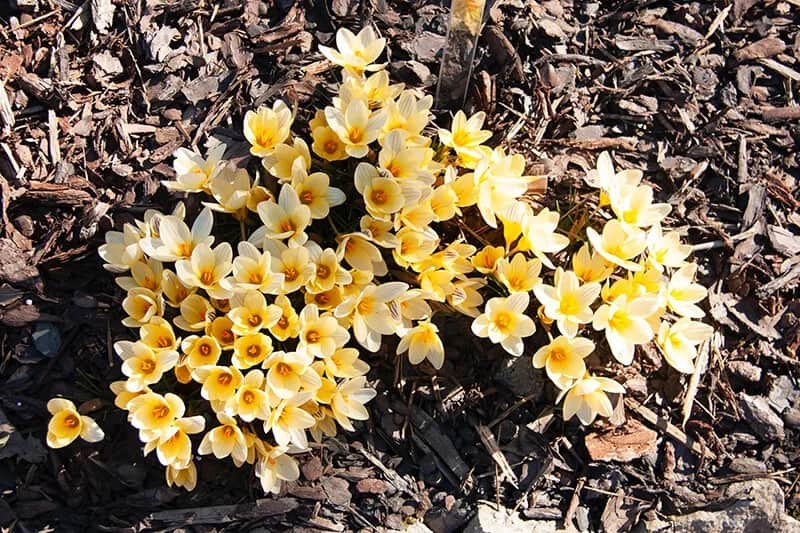
As the last wisps of winter’s chill dissipate, a burst of sunshine arrives with the golden petals of the Snow Crocus. This vibrant harbinger of spring bursts forth in late winter, bringing a splash of color to an otherwise monotonous landscape. The symbolism is clear: joy and cheerfulness are just around the corner. Unlike other varieties that emerge in early spring, this particular strain of Crocus takes its cue from the calendar, blooming from February to March.
Imagine the sheer spectacle of a group of these golden blooms unfolding en masse against the backdrop of winter’s snow-covered landscapes.
Glory of the Snow (Chionodoxa Forbesii)
The glory of the snow (Cerastium tomentosum) is a symbol of persistence and triumph over hardship. This low-maintenance perennial thrives in zones 3-8, where it can soak up full sun to part shade. Its medium water needs are met with good drainage, making it an excellent choice for gardeners who want a worry-free winter bloom. As the last wisps of snow melt away, the glory of the snow’s bright blue-violet petals burst forth, celebrating the trials you’ve overcome.
With its easy-to-grow nature, this flower is not only a testament to your perseverance but also a reminder that even in the bleakest of winters, beauty can still emerge.
Paperbush (Edgeworthia Chrysantha ‘Snow Cream’)
Beyond its stunning floral displays, the Paperbush offers a unique value proposition. In Japan, it’s highly prized for producing high-quality paper, a testament to its exceptional qualities. The symbolism of excellence is deeply rooted in Japanese culture, as some of this paper finds its way into banknote production, solidifying the association with wealth.
As a winter-flowering shrub, Paperbush thrives in medium-watered humus-type soils with good drainage, and can be grown in USDA hardiness zones 7 to 10. It’s a versatile plant that tolerates full sun to part shade conditions, and its blooming season typically spans from February to April.
Early Forsythia (Forsythia Ovata)
The early forsythia’s understated symbolism lies in its effortless compliance with the needs of its environment. This shrub thrives in conditions that are hardly demanding, requiring only medium watering tolerance and a loose soil with good drainage. While it can tolerate clay soil, it still appreciates well-drained ground to flourish. Its growing zones span from 4 to 7, making it suitable for most temperate climates.
As a sun-lover, early forsythia blooms best in full sun to part shade, although it’s not picky about its light intake. When it does bloom, the display occurs between February and April, surviving even the most extreme weather conditions, including temperatures as low as -25 degrees Fahrenheit, making it an excellent choice for those seeking a reliable addition to their garden.
Snowdrop (Galanthus Alpinus)
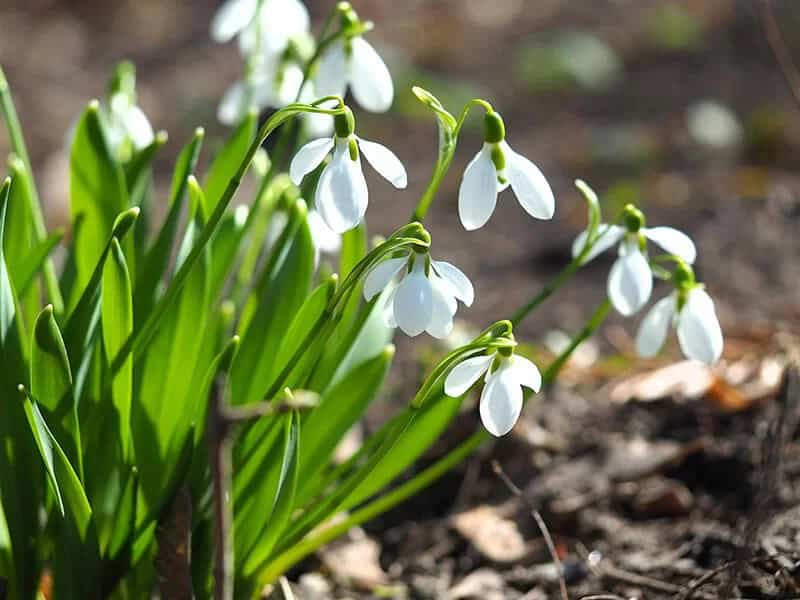
In the midst of winter’s chill, a trio of flowers emerges to symbolize comfort and hope for better days. Snowdrops (Galanthus nivalis), with their delicate white petals and green tips, are often one of the first signs that warmer temperatures are on the horizon. As they push through the last remnants of snow, they offer a message of encouragement, reminding us that spring is just around the corner.
Growing in moist soil with good drainage and receiving partial shade to full sun, these hardy blooms thrive in USDA zones 5 to 7. With their blooming season typically occurring from February to March, snowdrops can be relied upon to bring a touch of hope and joy to even the most dismal winter landscapes.
Hepatica (Hepatica Transsilvanica)
The symbolism behind hepatica flowers is deeply rooted in confidence and spirituality. Their unique liver-like shape has led to associations with spiritual restoration. When it comes to growing these winter-blooming beauties, they thrive in rich soils with good drainage, requiring a medium level of water and part shade.
Hepaticas are perfect for adding a pop of bright blue color to the winter landscape, making them an excellent choice for shady areas that need some extra vibrancy during this time of year. With growing zones ranging from 4 to 7, you can enjoy these blooms in your own garden from February to March.
Leatherleaf Mahonia (Mahonia Bealei)
While it’s common for people to feel irritable at times, leatherleaf mahonia can be a symbol of those feelings in the plant world. This flowering shrub has some specific needs to thrive, including medium watering (although it can tolerate drought), good drainage, and growing zones between 7 and 9. It prefers part shade to full shade and produces big clusters of yellow flowers that bloom from February to April.
As winter gives way to spring, these flowers transform into green fruits that are a hit with birds. In this sense, leatherleaf mahonia serves as a reminder that giving can be a powerful way to overcome feelings of grouchiness, and its vibrant display is the perfect antidote to a case of the grumps.
Japanese Apricot (Prunus Mume ‘Fenghou’)
Japanese apricots trees have a profound cultural significance in East Asia, where they embody the virtues of life, perseverance, and courage. In Japanese tradition, these trees are often paired with bamboo to represent a harmonious marriage. This variety is renowned for its exceptional hardiness, and in milder climates, it may even flower earlier than expected.
The apricot tree’s symbolism extends beyond its cultural significance, as it requires medium watering, acidic loamy soils with good drainage, and thrives in zones 6-9 with full sun to partial shade. Its blooming season typically falls between February and March.
Pansy (Viola × Wittrockiana)
Pansies, with their sweet scent and vibrant hues, hold a special significance in the language of flowers. According to tradition, these charming blooms convey the message that someone is perpetually on your mind. When planted correctly, pansies burst into bloom during late winter, filling the air with their intoxicating aroma. As an added bonus, they thrive in humus-rich soils with good drainage and full sun to part shade, making them a delightful addition to any garden.
In fact, these versatile flowers can be grown in USDA zones 6 to 10, allowing enthusiasts across a broad range of climates to enjoy their beauty. Whether you’re a seasoned gardener or just starting out, pansies are sure to bring a splash of color and whimsy to your outdoor space.
Ornamental Cabbage (Brassica Oleracea)
Ornamental cabbages, often overlooked for their lack of showy blooms, offer a unique advantage: year-round interest. Their foliage, which can be enjoyed throughout the winter months, has led to a symbolic association with prosperity and wealth in landscaping. In fact, these plants thrive under cool temperatures, which brings out the vibrant colors of their leaves. With medium water needs, consistently moist soil, and full sun, ornamental cabbages are well-suited for zones 2-11.
Whether you’re looking to add a pop of color or simply enjoy a low-maintenance addition to your garden, these plants are definitely worth considering.
Winterberry (Ilex Verticillata)
Winterberry (Ilex verticillata) is a stunning evergreen shrub that not only boasts vibrant red berries but also holds significant symbolic and cultural value. Its berries are often used in traditional Native American medicine, where they’re valued for their detoxifying properties. As such, the winterberry plant has come to symbolize cleansing and purification. In addition to its symbolic importance, the plant requires specific conditions to thrive.
It tolerates a wide range of wet soils but prefers acidic loam-type soil. Winterberry plants are dioecious, meaning you’ll need to plant multiple individuals to achieve an abundant crop of those striking red berries. They’re hardy in zones 3 to 9 and can tolerate full sun to part shade. The blooming season typically occurs from September to April, but it’s the persistent winter berries that really catch the eye.
Winter Jasmine (Jasminum Nudiflorum)
Valued in China for thousands of years, winter jasmine has earned the reputation as a ‘friend to snow’, and stands out as one of the earliest blooms preceding spring’s arrival. Its bright yellow vining flowers are steeped in symbolism, representing unwavering love that endures even when loved ones are physically separated. This theme is poignantly reflected in the flowers’ early emergence before leaf growth begins.
The plant thrives in conditions with medium water needs, preferring well-draining sandy loams and a growing zone of 6 to 10. It flourishes under full sun to partial shade, and typically blooms from March to April, marking the beginning of spring’s awakening.
Camellia (Camellia Rosaeflora)
Camellias are not only a stunning addition to any winter garden, but they also carry profound symbolism. In the realm of love, these flowers represent good fortune and steadfast affection, while in a broader sense, they embody contentment and happiness. As one of the few varieties of winter-blooming flowers that can thrive through snowfall, camellias offer a much-needed splash of color during the cold winter months.
With their delicate pink petals and evergreen foliage, these flowers are a perfect way to add some vibrancy to your garden’s winter landscape. In terms of growing conditions, camellias require medium watering, acidic soils with good drainage, and can thrive in zones 7-9. They also prefer partial shade and bloom from December to March.
Wintersweet (Chimonanthus Praecox)
Wintersweet’s delicate charm lies not only in its intricate flower patterns, but also in its subtle fragrance and symbolic significance. As a symbol of long life, this winter bloomer is often featured in traditional Chinese cooking as a means of promoting good health. But Wintersweet’s appeal extends beyond the kitchen, offering a unique sculptural element to any space.
Its yellow and purple flowers thrive in conditions that are easily replicable: fertile soil with good drainage, full sun to part shade, and temperatures ranging from 7 to 9 growing zones. With an impressive blooming season spanning February to March, Wintersweet is sure to add a touch of elegance and sophistication to any room.
Cyclamen (Cyclamen Persicum)
Cyclamen’s fascinating life cycle is a metaphor for the circle of life. This unique perennial flower loses its leaves in the spring, remains dormant during the summer, and bursts forth with vibrant blooms during the winter months. As it undergoes this transformation, cyclamen serves as a poignant reminder of both life and death. The Greek name for cyclamen, ‘circle,’ further underscores its symbolism.
For those who find themselves drawn to contemplating the mysteries of existence, incorporating cyclamen into your garden design can be a thought-provoking experience. In terms of specific growing requirements, cyclamen thrives in medium water conditions, preferring fertile and well-draining soil with partial shade.
Daffodil (Narcissus ‘February Gold’)
As the last wisps of winter dissipate, daffodils burst forth with vibrant colors and an undeniable sense of joy, signaling the onset of spring. Representing happiness and childhood, these cheerful blooms require medium levels of water, average to moist soils with good drainage, and thrive in zones 4 to 8. In their full glory, they need to bask in full sun to part shade, typically blooming from February to April.
The ‘February Gold’ variety is a notable exception, blooming as early as February for those in warmer climates like zone 7 or higher, while those in cooler zones can expect to see them burst forth from March to April.
Desert Petunia (Ruellia Simplex ‘Purple Showers’)
The desert petunia is a symbol of toughness, happiness, and anger, as represented by the 🔮 symbol. This flower originates in the deserts across Texas and Mexico and has adapted to thrive in a wide range of conditions, including medium to wet soil and tolerating drought. It can also grow well in bog-type soils, making it an ideal candidate for representing both fury and elation at once.
Interestingly, the ‘Purple Showers’ variety is sterile, which means that its strong will to survive will not result in invasive growth. Desert petunias require medium to wet soil, wide range of soil types, and can tolerate drought. They need full sun to part shade light and grow in zones 8-10. The flowers bloom year-round, adding a pop of color throughout the seasons.
Christmas Cactus (Schlumbergera × Buckleyi)
Imagine a symbol of punctuality and Christmas joy sitting on your mantle or coffee table – it’s no wonder why the Christmas Cactus has become a popular holiday decoration. The story behind its creation is just as enchanting: by crossing two Brazilian cacti, breeders successfully created a plant that bursts into bloom around Christmastime. With its sandy soil and good drainage requirements, the Christmas Cactus thrives in zones 10 to 12, making it perfect for warm winter nights.
When placed in part shade and receiving moderate water, this festive flora will reward you with blooms from December to February. Bringing a Christmas Cactus into your life is like creating your own holiday magic – it’s an experience you won’t soon forget.
Snapdragon (Antirrhinum Majus)
Snapdragons, with their majestic, dragon-like appearance, embody the essence of pride. Their vibrant colors and statuesque stature make them a symbol of ostentatious pride, as if they’re flaunting their grandeur for all to see. This ephemeral nature of snapdragons, however, serves as a poignant reminder that even the most proud of displays can be fleeting, vanishing with the arrival of frost.
Snapdragons thrive in conditions of medium water needs, moist soil with good drainage, and full sun, making them suitable for growing zones 7 to 10. In the spring, they burst into bloom from April until the first frosts, painting the landscape with a kaleidoscope of colors.
Italian Aster (Aster Amellus ‘Veilchenkönigin’ Violet Queen)
Italian asters may not boost your memory like a certain plant-based supplement, but they do serve as poignant symbols of remembrance. The vibrant purple hue of these winter blooms is sure to leave a lasting impression, much like the memories you’ll cherish during their blooming season from September until frost sets in. While the flowers themselves are fleeting, their impact can linger well into winter’s depths.
Love-Lies-Bleeding (Amaranthus Caudatus)
The vibrant crimson blooms of this winter flower species evoke a sense of sacrifice, sympathy, and loyalty. While many winter blooms radiate joy, it’s equally crucial to acknowledge the sorrow that accompanies us. The long, trailing flowers serve as a poignant reminder that even in times of pain, there is hope for renewal. When frost sets in, the delicate tassel-like flowers begin to fade, symbolizing the impermanence of suffering.
This resilient species thrives in conditions marked by medium water needs, moist soil with good drainage, and can be grown in zones 2 to 11, tolerating full sun to partial shade. In July, it begins to bloom until the onset of frost, filling the winter landscape with a pop of color that speaks to the human experience.
Winter Aconite (Eranthis Hyemalis)
27 Meaningful Winter Flowers to Plant for a Garden to Help Tell Your Story
Winter presents the ultimate challenge for gardeners: keeping their landscapes engaging despite the lack of vibrant blooms. However, winter-blooming flowers offer a unique opportunity to add beauty and depth to your outdoor space. The stark contrast between the dull surroundings and the vibrant colors of these flowers creates an intensified sense of vitality, making them all the more striking. But beyond their visual appeal, each flower has its own special meaning and story.
By choosing winter blooms that resonate with your personal journey, you can create a garden that not only reflects your style but also serves as a symbol of growth and transformation. As the gardener nurtures these plants, they may just find themselves growing alongside them, in more ways than one.
